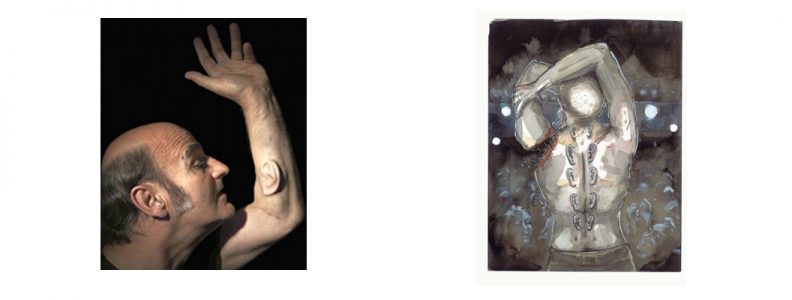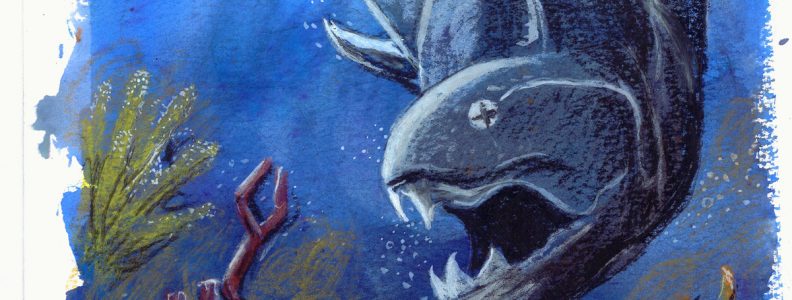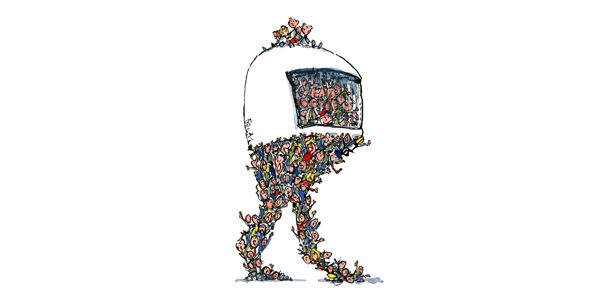With less than a week to go before Biohacked & Begging is released, the interviews have started. One of the recurring questions is about the inspiration behind the collection. There is a long answer, which can be found on a previous post Prodding and poking the possible, but the short answer is, “to entertain.”
The second story in the collection is Mr Enhancement, wonderfully illustrated by Kim Hutson above, and written specifically for the Enfield Literary Festival as part of The Clockhouse London Writers Presents.
I took the inspiration from the performance artist Stelarc, who famously has an ear on his arm. Here’s an extract from his biography: “[…] has visually probed and acoustically amplified his body. He has made three films of the inside of his body. Between 1976-1988 he completed 26 body suspension performances with hooks into the skin. He has used medical instruments, prosthetics, robotics, Virtual Reality systems, the Internet and biotechnology to engineer intimate and involuntary interfaces with the body. He explores Alternate Anatomical Architectures with augmented and extended body constructs.”
As you can imagine, I was really chuffed when Stelarc agreed to read an advance copy of Biohacked & Begging and doubly chuffed when he gave me this quote for the cover: “Can humans remain ‘more than digital, more than flesh’ with detachable limbs, multiple ears, implants that can be hacked and nanobots that can be ingested? These thoroughly enjoyable and contestable futures explore the personal and political implications of fleshy and messy encounters with contentious technology and the epidemic of algorithms.”
I hope you enjoy the collection as much as Stelarc did.
Biohacked & Begging is published on 12 April, but you can pre-order from Amazon now.
Press release available here and on request.
Art: Mr Enhancement by Kim Hutson @batfacedgirlart



